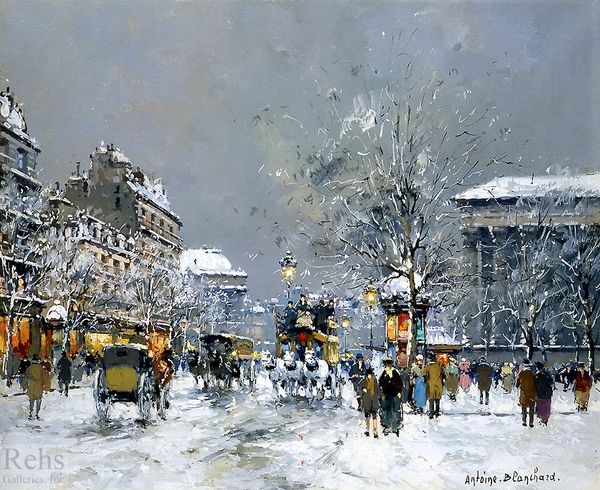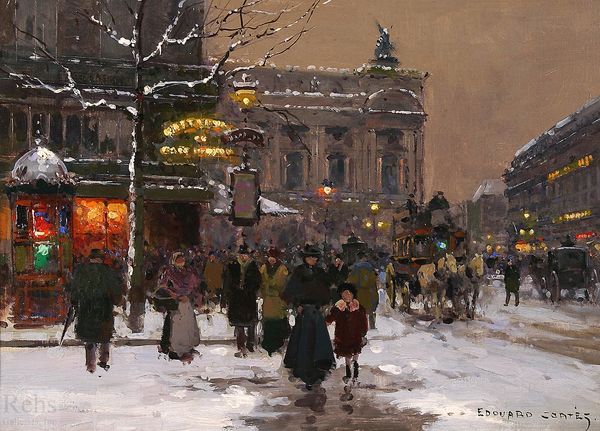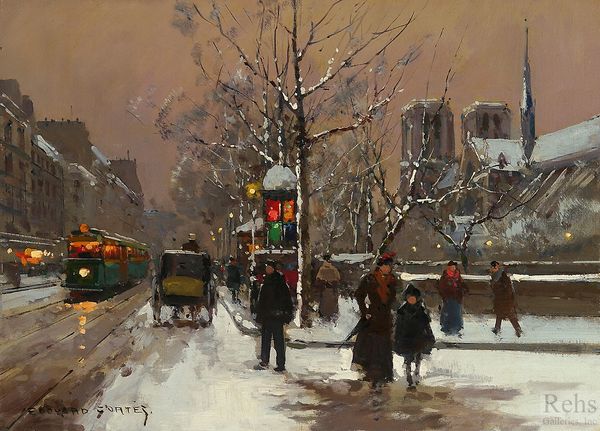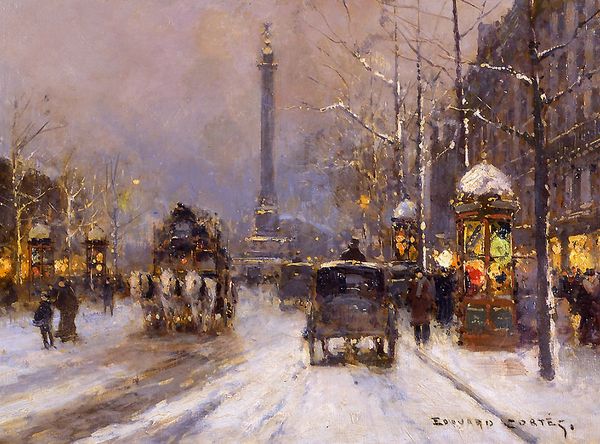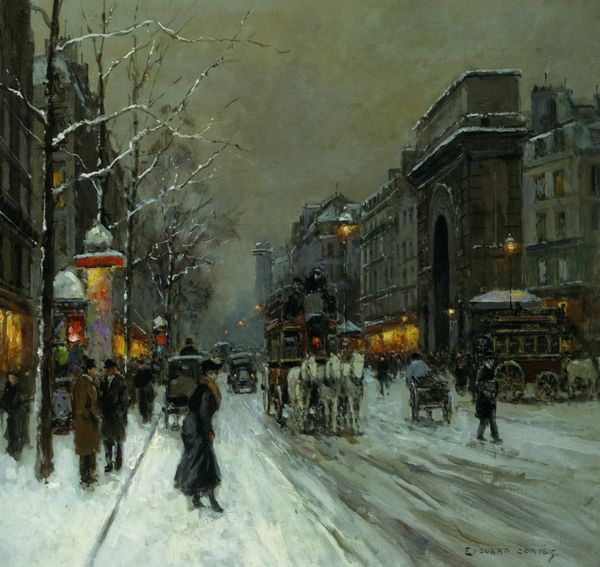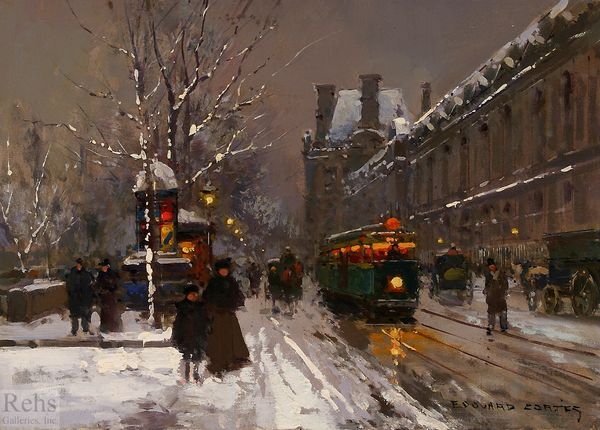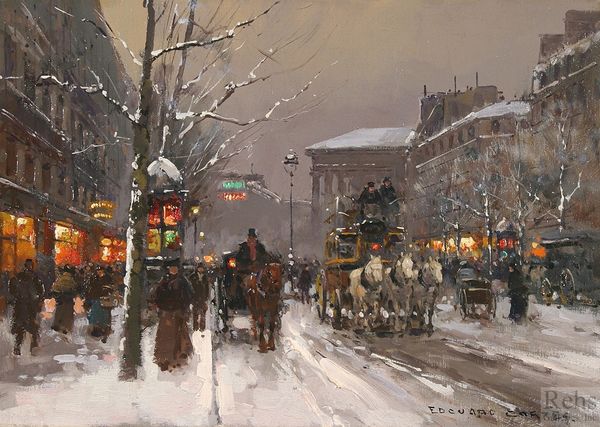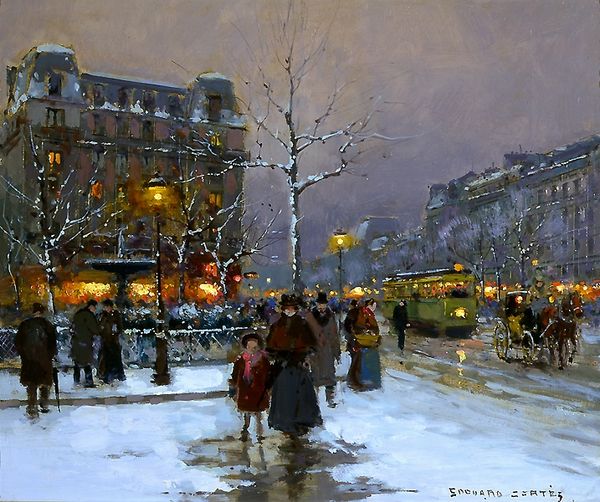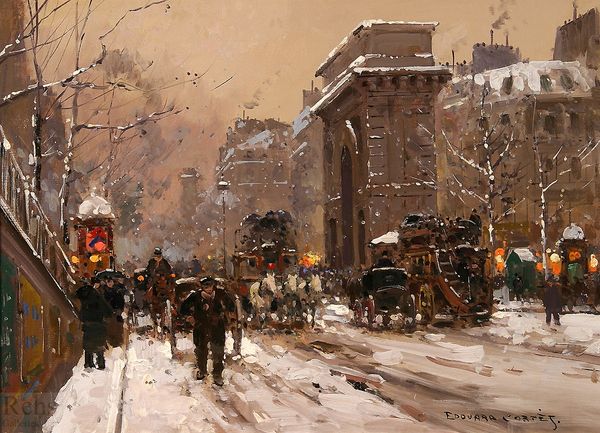
painting, plein-air, oil-paint, impasto
#
street-art
#
painting
#
impressionism
#
street view
#
plein-air
#
oil-paint
#
landscape
#
street-photography
#
oil painting
#
impasto
#
cityscape
#
building
Copyright: Edouard Cortes,Fair Use
Editor: Looking at Edouard Cortes’ “Place de la Republique,” I’m struck by the way the oil paint creates such a tangible atmosphere. It feels so bustling yet serene, capturing a snowy day in Paris. What draws your eye when you look at this work? Curator: For me, it’s the materiality itself that’s most compelling. Look at the impasto technique – thick strokes of oil paint that aren't just descriptive but become active participants in creating the scene. It’s not just about representing snow, it’s about the labor and physical act of applying paint to canvas to depict labor out in the streets. Editor: That's interesting. I hadn't really thought about the labor of the painter himself being so visible. Curator: Exactly! Consider how the industrial revolution impacted art materials. Oil paints became readily available, allowing artists to depict modern life more easily. This piece documents a moment, but also testifies to the evolving means of art production and consumption within its historical period. Editor: So you’re saying the painting isn’t just about Paris, but about the changing artistic and societal landscape too? How everyday life became fuel and was, in turn, fuelled by a market revolution for impressionist painting? Curator: Precisely. Notice how he captures a specific kind of consumption through commodities. People on horse carriages and fine buildings suggesting a certain socioeconomic status are on full display through quick brushstrokes made available by technological progress. That combination is critical. Editor: That makes me look at the scene very differently. I appreciate how focusing on the materials and process gives us insight to see how socio-economic consumption impacts art. Curator: Right. We move past simple representation, exploring instead how Cortes' materiality participates in constructing meaning around labor, progress and daily lives.
Comments
No comments
Be the first to comment and join the conversation on the ultimate creative platform.
